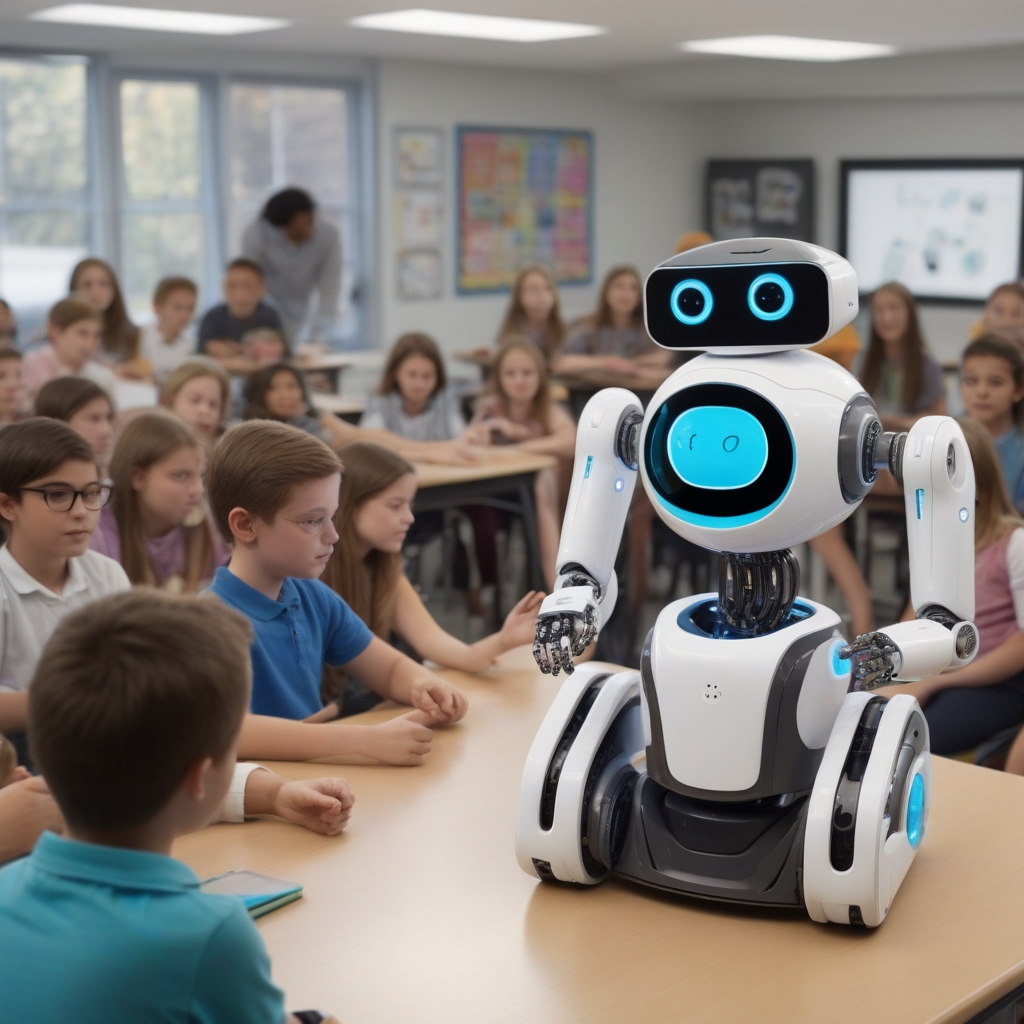The Evolution of AI in Education: More Than Just Automation
Artificial intelligence (AI) is no longer a futuristic concept confined to science fiction. It has seamlessly integrated into various fields, transforming how we live and work. One area where AI shows immense promise is education. From streamlined processes to interactive learning, AI is making waves. But its true potential lies in transforming not just teaching methods but also the inspiration behind them.
What Is AI in Teaching?
At its core, AI in education leverages machine learning algorithms and data analytics to enhance teaching and learning experiences. Here’s a glimpse into what AI can do:
- Automate administrative tasks: AI can handle routine duties like grading assignments and managing schedules, freeing up time for teachers to focus on instructional delivery.
- Personalize learning: Algorithms can analyze student performance data to tailor educational content to individual needs, fostering a more effective and engaging learning environment.
- Facilitate distance learning: AI-driven platforms offer consistent, accessible education, breaking down geographical barriers and expanding opportunities for learners worldwide.
From Automation to Inspiration: How AI Elevates Teaching
While automation is an important aspect of AI, its most profound impact lies in its ability to foster inspiration. The integration of AI technologies into the classroom moves beyond mundane tasks to creating enriched, dynamic learning experiences.
Interactive Learning & Student Engagement
Traditional teaching methods often struggle to keep students engaged. AI-driven tools can revolutionize this:
- Adaptive Learning: AI can assess individual learning styles and paces, adapting materials to fit the unique needs of each student.
- Gamification: Incorporating AI with gamified learning encourages participation and makes education fun. Rewards, leaderboards, and challenges capture students’ attention more efficiently.
- Virtual Reality (VR) and Augmented Reality (AR): AI enhances VR and AR applications, providing immersive experiences that make complex concepts easier to understand.
All these elements work harmoniously to nurture a vibrant educational environment that inspires curiosity and a love for learning.
Empowering Teachers
AI doesn’t replace teachers; it empowers them. Here’s how:
- Data-Driven Insights: AI tools analyze vast amounts of data to offer insights into student performance and learning preferences. Teachers can utilize this data to develop targeted intervention strategies.
- Interactive Professional Development: AI-powered platforms offer personalized training programs for educators, focusing on areas where they need improvement.
- Resource Accessibility: Teachers gain access to a plethora of AI-curated educational resources, from lesson plans to teaching aids, helping them diversify instructional techniques.
With these tools at their disposal, teachers can shift their focus from administrative overhead to more impactful educational interactions.
Customizing Education
One-size-fits-all approaches rarely work in education. AI enables the customization of teaching methods, ensuring that every student’s unique needs are met.
- Individual Learning Plans (ILPs): AI can create and adjust ILPs based on real-time data, helping students stay on track and addressing learning gaps more effectively.
- Feedback and Assessment: AI can provide immediate, personalized feedback, encouraging continuous improvement and reducing the time between assessment and learning.
- Inclusive Education: AI tools can accommodate students with special needs through tailored learning experiences, making education more inclusive and equitable.
Ultimately, this level of customization ensures that every student receives the support they need to succeed.
Preparing Students for the Future
Equipping students with the skills they need for future careers is a critical aspect of modern education. AI plays a significant role in achieving this.
- Skill Development: AI-driven platforms can identify emerging skill gaps and provide tailored training programs to bridge them effectively.
- Problem-Solving and Critical Thinking: AI-based simulations and problem-solving exercises mimic real-world challenges, helping students develop essential life skills.
- Career Guidance: AI can offer personalized career recommendations by analyzing students’ strengths, weaknesses, and interests.
By preparing students for future challenges, AI ensures that they are not only academically proficient but also ready to thrive in an ever-changing world.
The Ethical Considerations
As we embrace AI in education, ethical considerations must not be overlooked.
- Data Privacy: Schools must ensure that student data is safeguarded against breaches and misuse.
- Bias and Fairness: AI algorithms must be regularly audited to minimize biases, ensuring fair and equitable treatment of all students.
- Responsibility and Accountability: Clear guidelines should be established to outline the roles and responsibilities of AI developers, educators, and policymakers.
Addressing these ethical concerns is crucial for building trust and ensuring the positive impact of AI on education.
Conclusion: The Bright Future of AI in Education
AI holds unprecedented potential to revolutionize education. By automating routine tasks, personalizing learning experiences, and fostering inspiration, AI can transform teaching and learning into a harmonious and impactful endeavor. As we continue to explore and harness this technology, the focus should be on using AI not just as a tool of convenience, but as an agent of inspiration and growth, benefiting educators and students alike.
With thoughtful integration and ethical considerations, AI will undoubtedly pave the way for an enriched, inclusive, and inspiring educational landscape.

Leave a Reply